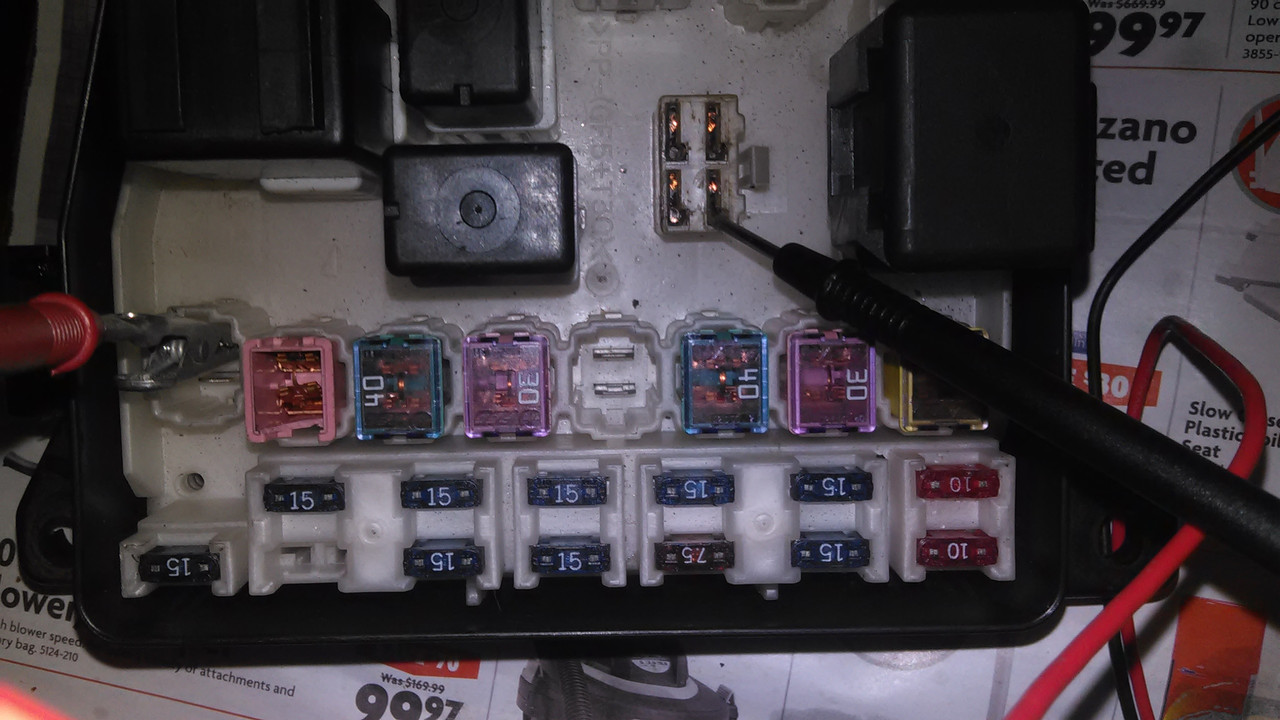Swapped original fusebox back in, retook all readings:
Zero at green white wire again. Note that I tested all the terminals in the long white connector, some had stray voltage and one had 3.15 volts. Then I plugged it back in.
INJ fuse terminals getting clean 12v.
(INJ fuse tests perfect continuity)
Zero at green main relay signal side.
Zero at fuel pump relay signal side, of course.
I then put the parts car fusebox back in because it's got less scorching on fuel pump relay terminal, and shut down operations for the night.
If you remove the white/green wire from the connector, you can put it back in if the bypass doesn't work.
You could feed B+ to the metal clip, as well as B+ to to the R9 terminal of the main relay, all with temporary connections and see if it works.
I don't have a sufficient array of spark-wizard clippy wires to perform this magic trick. I will set about acquiring them.
Replacing the harness sounds like a real chore. The wires get old, stiff and brittle and can break internally without being visible.
Agreed. But that's probably where the broken wire is that fuch'ed this car.
Even if temporary bypass connections send power to fuel pump and starts the car, I can't drive it like that - the repairs need to be made. I'm going to have to slit open the parts car's harnesse and find where the wires go from the INJ fuse on that chart and from the green white wire. Then dig into Blue Lemon's harness. F.M.L.
















